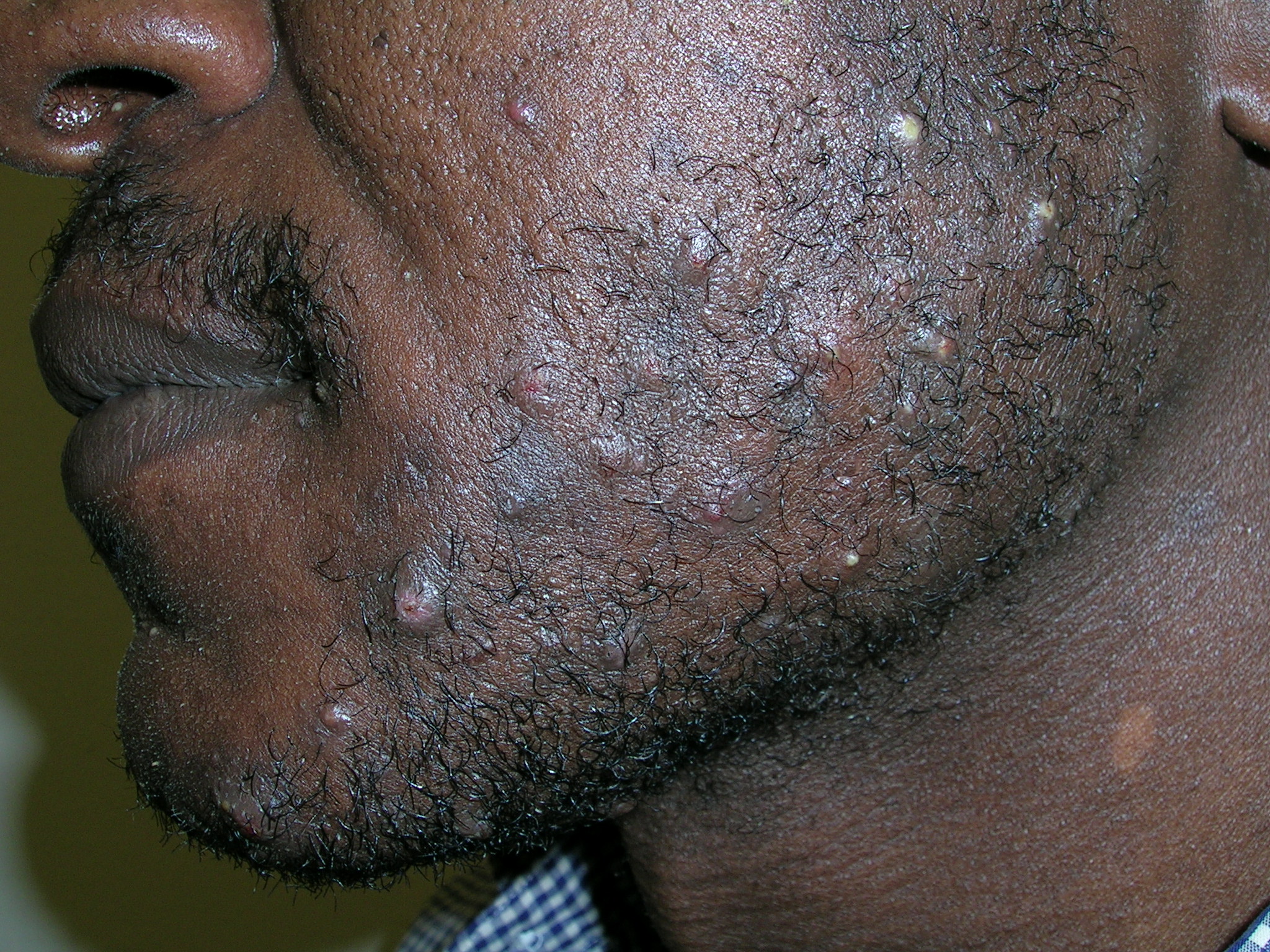We diagnosed pseudofolliculitis (razor bumps or shave bumps).
Pseudofolliculitis is a common skin condition affecting the hair bearing areas of the body that are shaved. It is most common in black men; at least half of black men who shave are prone to the condition.
When this condition occurs in the beard area, it is called pseudofolliculitis barbae; when it occurs after pubic hair is shaved, it is called pseudofolliculitis pubis. Pseudofolliculitis develops when, after shaving, the free end of tightly coiled hair reenters the skin, causing a foreign-body-like inflammatory reaction. Shaving produces a sharp free end below the skin surface. Tightly curled hair has a greater tendency to pierce the follicle and the surface of the skin, explaining the relative predominance of this condition in patients of African descent.
We told the patient that the less he shaved the better his skin would become. We instructed him to search for ingrown hairs daily by using a magnifying mirror, and to release them gently with a sterilized needle or tweezers. We also treated him with nightly tretinoin cream to the beard area. We told him that he could safely use 1% hydrocortisone cream to the face as needed for inflammation and itching. On a follow-up visit 2 months later, his skin was significantly improved.
Photos and text for Photo Rounds Friday courtesy of Richard P. Usatine, MD. This case was adapted from: Mayeaux, EJ. Pseudofolliculitis and acne keloidalis nuchae. In: Usatine R, Smith M, Mayeaux EJ, Chumley H, Tysinger J, eds. The Color Atlas of Family Medicine. New York, NY: McGraw-Hill; 2009:453-456.
To learn more about The Color Atlas of Family Medicine, see:
* http://www.amazon.com/Color-Atlas-Family-Medicine/dp/0071474641


